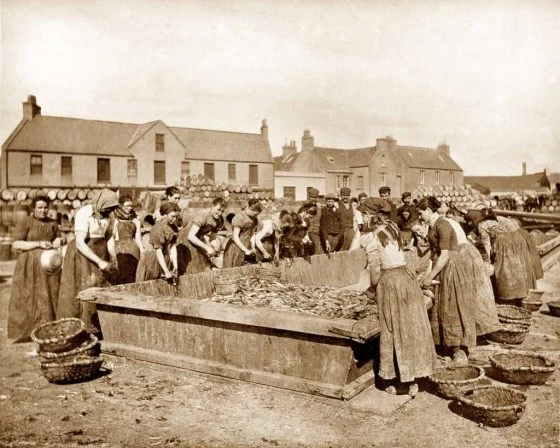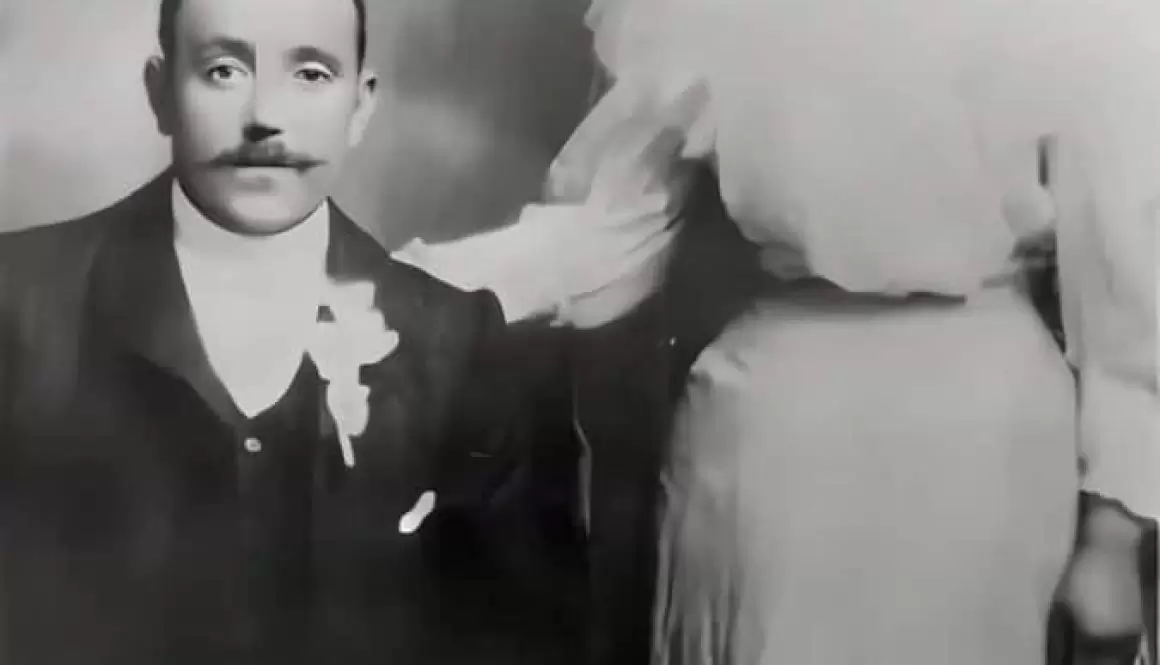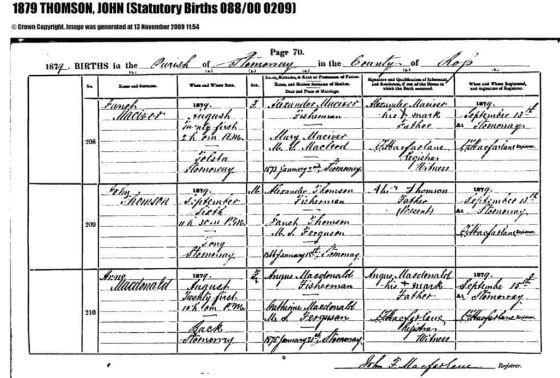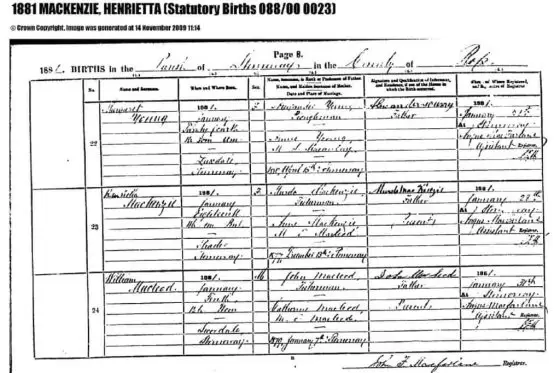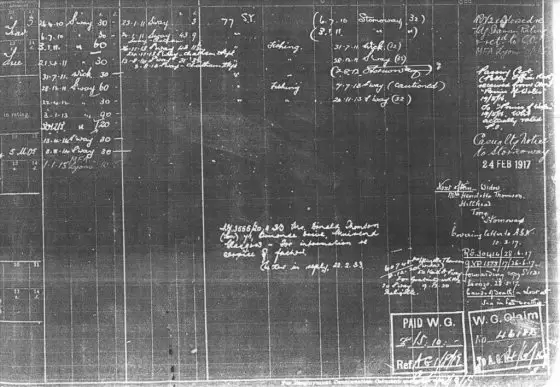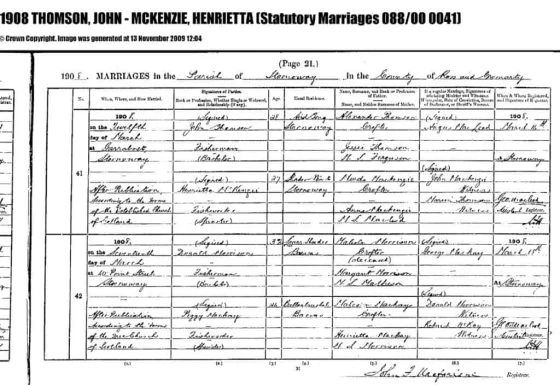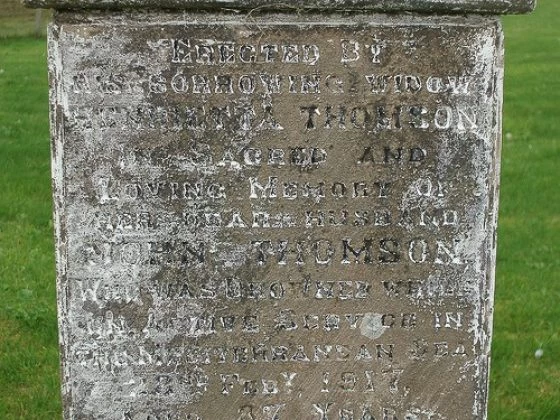John Thomson and Henrietta MacKenzie
John Thomson and Henrietta MacKenzie
John Thomson
John Thomson was born at 32 Aird Tong, Isle of Lewis, Scotland on 6 September 1879. His parents were Alexander Thomson and Janet “Jessie” Ferguson. Their story is told on a separate page.
Henrietta “Effie” MacKenzie
Henrietta “Effie” MacKenzie was born at Shulishader, Isle of Lewis, Scotland on 18 January 1881. Her parents were Murdo MacKenzie and Anne MacLeod, Their story is told on a separate page.
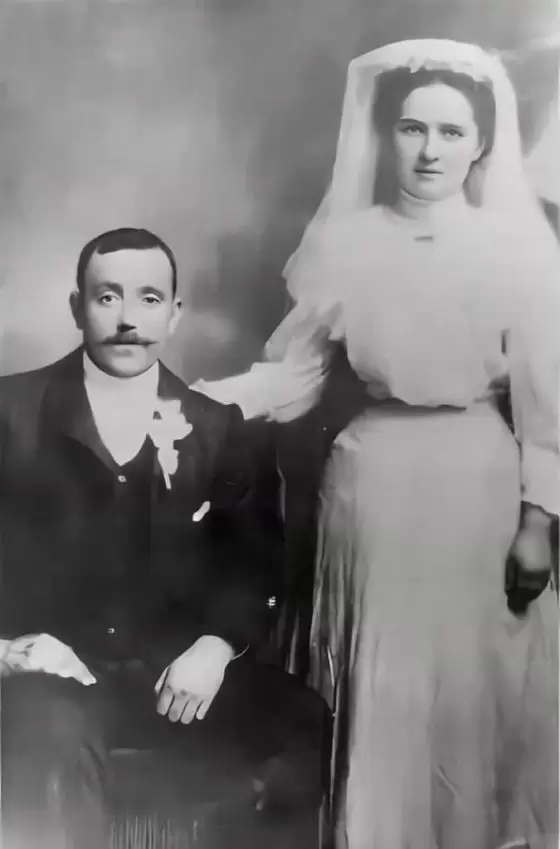
Wedding Photo
I thought I would start off with a photo of the happy couple on their wedding day. Their marriage certificate shows that they were married on 12 March 1908 in Garrabost according to the customs of the Established Church of Scotland. It would seem that the MacKenzies worshipped at the Church of Scotland.
The Church of Scotland was founded in the Reformation when John Knox split from the Catholic Church. They espoused the theology of Calvinism. This is not to be confused with the Free Church of Scotland.
The Free Church was and still is sometimes colloquially known by the term “The Wee Frees”, even though, in 21st century Scotland, it is the largest Presbyterian denomination after the national church. Since this term was originally used in comparing the Free Church with the United Free Church (which is now a much smaller denomination), the Free Church of Scotland now deprecates the use of the term.
The Thomsons of Tong were members of the Free Church. In Garrabost there was both a Free Church and a Church of Scotland.
John Thomson
The illustration opposite shows the Birth Certificate of John Thomson at 32 Aird Tong, the family home. His father Alexander Thomson records his occupation as “fisherman”, but on John’s marriage certificate he records his occupation as “crofter”.
He was, of course, both a crofter and a fisherman, as the crofting way of life was a subsistence way of life which ideally required another source of income to support the family. As John was one of 14 children an additional source of income was almost a necessity.
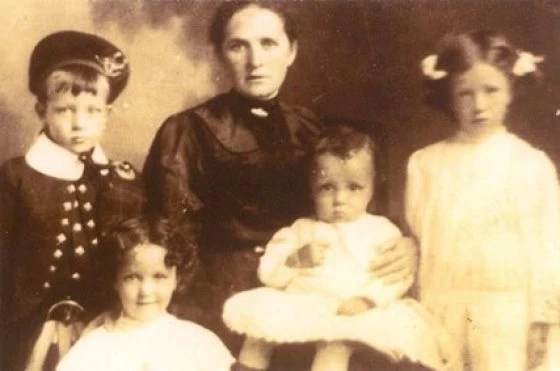
Family Photograph
The photograph opposite is a photograph of Henrietta “Effie” MacKenzie taken about 1920. There was a fifth child called Johanna, who died in infancy in 1916.
Henrietta “Effie” MacKenzie
My aunt told me the story of the day that they got the news about her father. A telegraph boy had been spotted cycling round Broad Bay, which meant only one thing; bad news for someone. Everybody would emerge from their croft and stand by their gate, hoping he would cycle on to Gress or Tolsta, but on this occasion he cycled into Tong and down to 32 Aird Tong to hand my grandmother the telegram to say that her husband had been lost at sea. My aunt said she was hysterical and inconsolable. My aunt was nine years old at the time.
John Thomson – Service Record
John Thomson had been killed in the Mediterranean during the First World War, and, as a result, the family were evicted from the croft at 32 Aird Tong, which had been the family home for three generations. Effie lost her youngest child in 1916, then lost her husband in 1917, and was then evicted from their home. Effie moved to Stornoway to find work as a fishworker on the quayside. The children were split up and went to stay with various MacKenzie relatives on Point.
Eventually Effie managed to get a flat in Keith Street and was able to get her children back into a single family unit. Judging by the age of the children, I’m guessing that this photograph was taken about 1920, and was presumably to celebrate the reunification of her family.
The MacKenzie Family
The photograph opposite shows the MacKenzie Family. Standing at the back is Henrietta “Effie” MacKenzie, my grandmother, with her arm on her mother’s shoulder. Her mother was Anne MacLeod.
On the chair is Isabella, who married Roderick MacKenzie a widower. It was said that Isabella’s father Murdo did not approve of the marriage as he hoped that she would look after him in his old age. He then moved in with Effie, who by this time was widowed.
Sitting, Jessie, the youngest, who was engaged to James Thomson. Two brothers engaged to two sisters, but he jilted her and she eventually married a policeman called Donald MacLeod of Aignish and had a family Norman (bank manager), Donnie (minister), Alastair (teacher) and John (doctor). They lived in Glasgow.
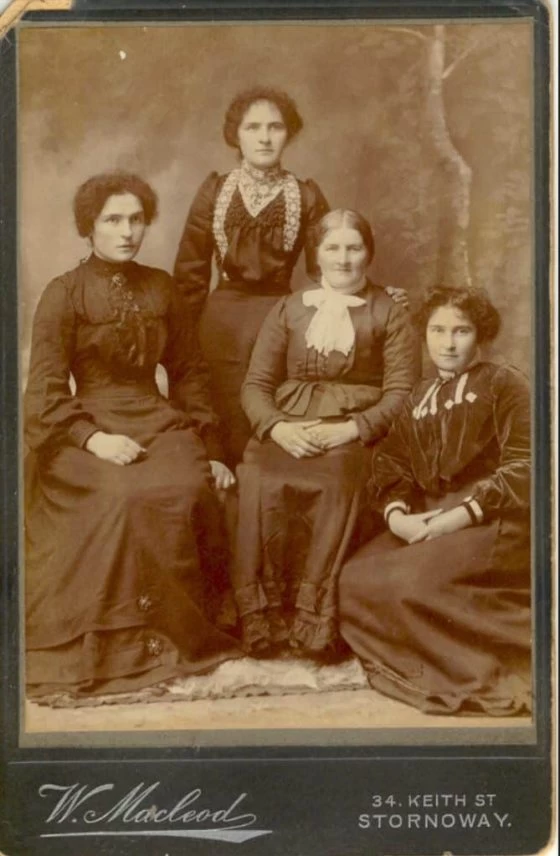
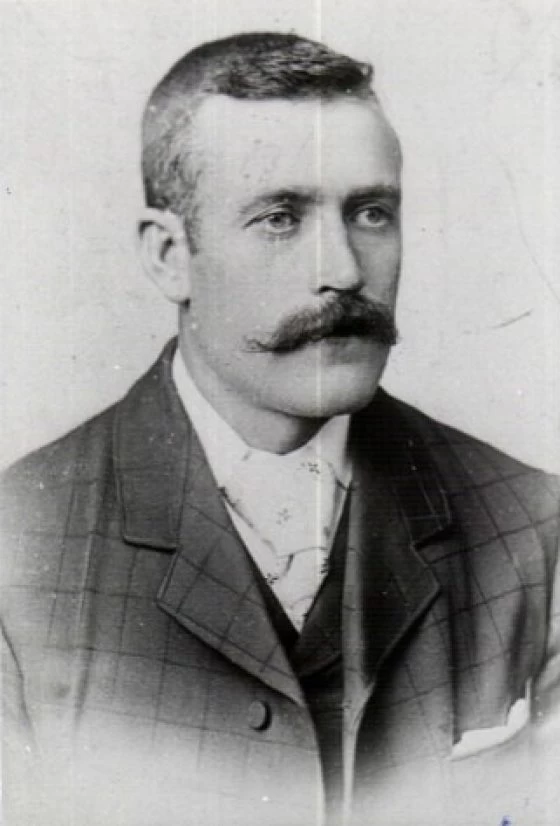
John Thomson
A photo of John Thomson, my grandfather, in his early years. One feature, which he appears to have passed on to his son, Donald, and also to me is the receding hairline. It provides a useful yardstick for dating photographs. In this photograph he has a very respectable hairline, but later photographs his receding hairline is more pronounced. I would guess that this photograph was taken about 1900.
As a sea faring fisherman, John Thomson would have been able to supplement his income by joining the Royal Naval Reserve (RNR). The Royal Naval Reserve is a part-time force of civilians, who provide the Royal Navy with the additional trained personnel it needs at times of tension, humanitarian crisis, or conflict.
As a consequence of his membership of the RNR, John Thomson was called up at the outbreak of hostilities in 1914, at the beginning of the First World War. He served aboard HMS Isonzo. The Isonzo, originally called the Isis, was a steamship of about 1,700 tons. She was originally built for P&O to reduce the time for mail and passengers between Brindisi in Italy and Port Said in Egypt. She was requisitioned by the Royal Navy and renamed HMS Isonzo in 1916.
She was used as a supply ship by the Navy, running a shuttle between Malta and Taranto in Italy where a British Battlegroup centred around the battleships, HMS Queen and HMS Prince of Wales was based. The Navy of the Austrian Hungarian Empire was docked in Trieste, and the British were seeking to blockade the entrance to the Adriatic Sea near Taranto, to prevent the Austro-Hungarian Navy entering the Mediterranean and joining the hostilities.
HMS Isonzo
A watercolour sketch of the Isonzo moored off the Castillo Grande Signal Station in Malta. Malta was used as a staging post for supplies and personnel for keeping the Battlegroup in Taranto fully supplied.
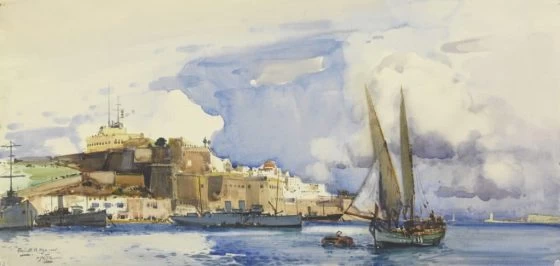
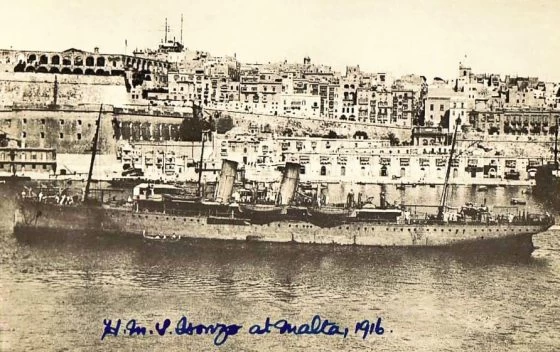
February 1917
In January 1917, the Ships Log shows that the Isonzo was in dry dock having extensive repairs involving the removal of one of the steam boilers. The Ships Log for February 1917 is missing from the Public Record Office, but I was able to piece together her movements from the Ships Logs of other vessels that moored alongside her in Malta and Taranto.
This story is based on witness statements of another seaman from Lewis who was aboard Isonzo at the time. It seems that she left Malta bound for Taranto on 21 February. An incident ocurred on the trip, which apparently required the ship to seek shelter in a bay and send down a diver, who was supported by my grandfather. The diver got into difficulties and was rescued by my grandfather, but who was lost at sea in the process.
The Isonzo docked the following morning in Taranto and an inquiry was held on board one of the warships, but I have never managed to get a copy of the Inquiry Report at the National Archives.
Gibraltar
After the war the Isonzo was laid up in Gibraltar and sold to Italian Ship breakers in 1923.
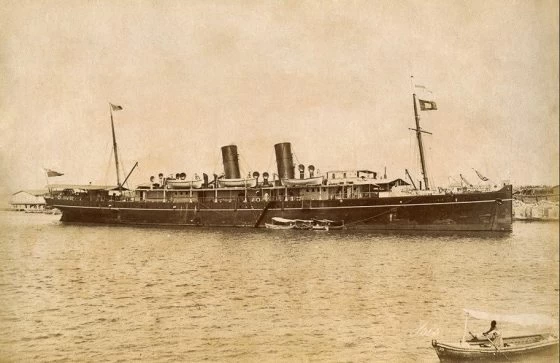
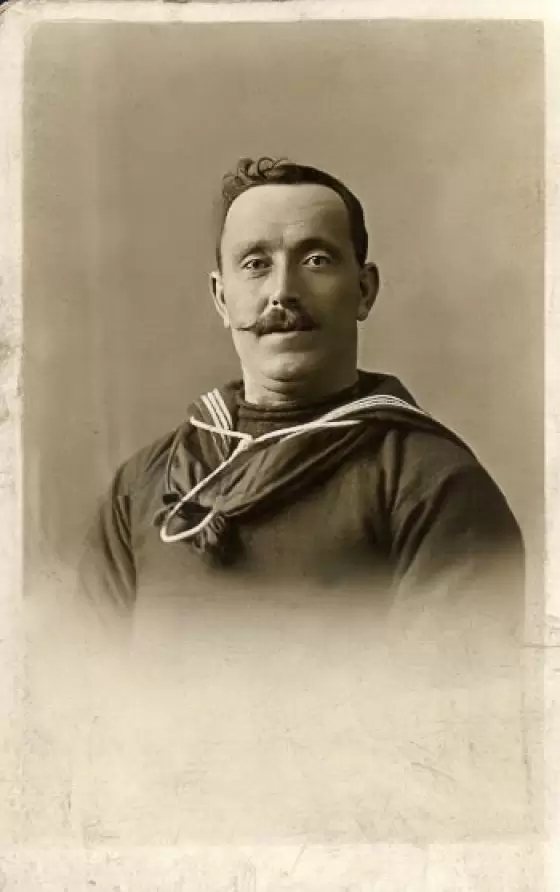
John Thomson RNR
John Thomson RNR
Dating this photograph, from his hairline and also his uniform, I would guess that it was taken not long before his death in 1917.
I was proud to note that he wore the same splayed moustach as Thomson, one of the pair of detectives in the Tintin books. See the Home Page if you need an explanation.
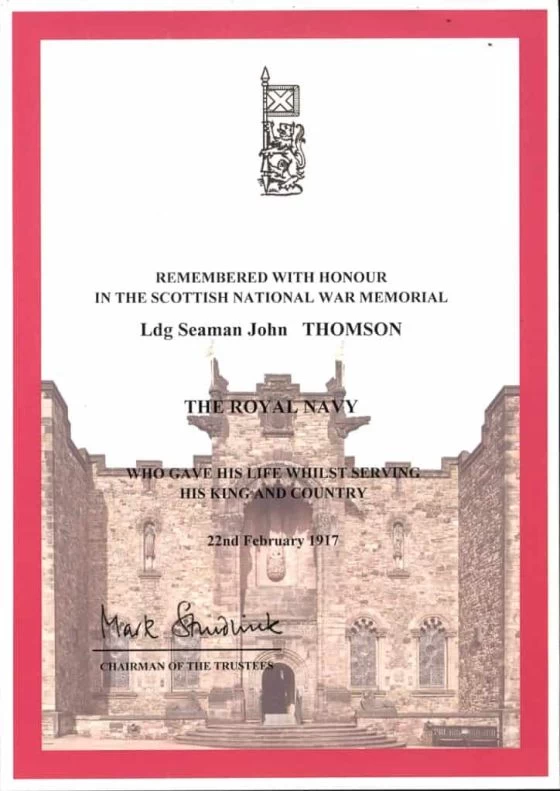
Remembered with Honour
The Scottish National War Memorial, located inside Edinburgh Castle maintains a record of all service personnel from Scotland who lost their lives during the war.
The Certificate opposite recognises John Thomson’s entry in the Register.
Chatham Naval Memorial
John Thomson RNR is also included on the Chatham Naval Memorial.
Commemorated in perpetuity by the Commonwealth War Graves Commission.
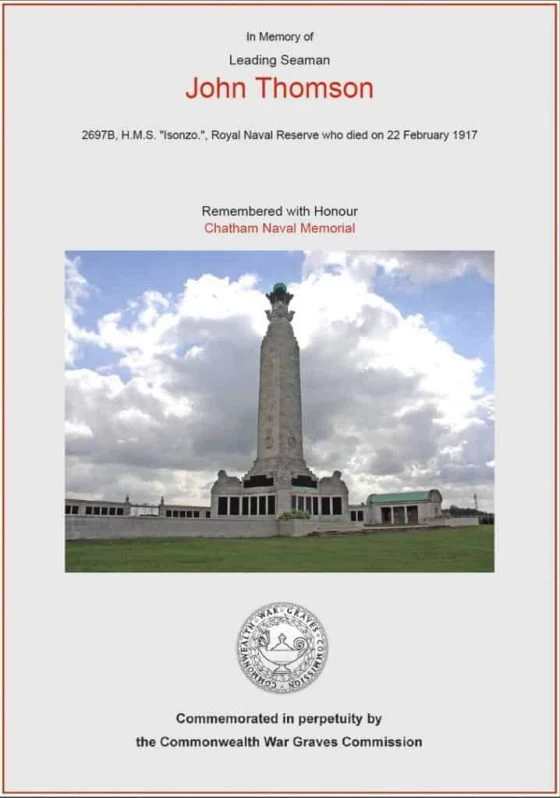
Gress Cemetery
Although his body was never recovered a Memorial Stone was erected in Gress Cemetery. The transcription reads
“Erected by his sorrowing widow Henrietta Thomson, in Sacred and Loving Memory of her dear husband John Thomson, who was drowned while on active service in the Mediterranean Sea. 18 February 1917”.
In fact the date is incorrect as he died on the 22 February.
Fishworkers
On her marriage certificate, Effie records her occupation as a fish worker. After her husband died, Effie returned to Stornoway and got work as a fishergirl on the quayside and was able to reunite her family.
Effie MacKenzie asked to be buried in the cemetery in Aignish, as she did not wish to share her final resting place with the man who had evicted the family from their croft at 32 Aird Tong. He, whoever he was, and I believe that he might have been a Thomson relative, had been buried in the cemetery in Gress.
